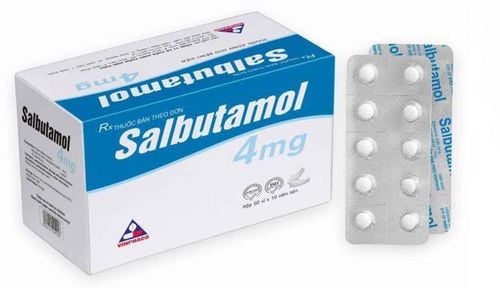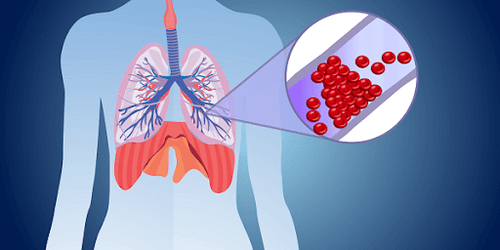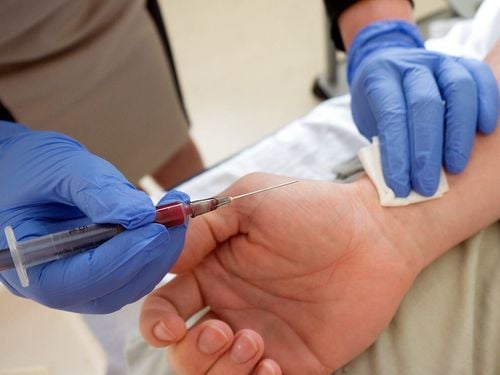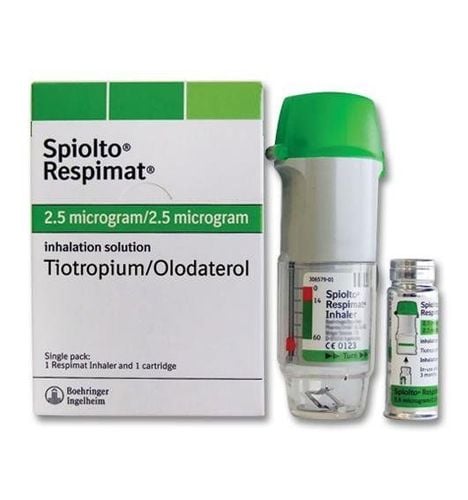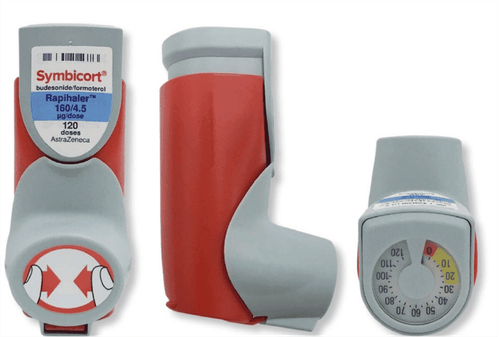This is an automatically translated article.
The article was professionally consulted by resident Doctor Nguyen Quynh Giang - Department of Diagnostic Imaging and Nuclear Medicine - Vinmec Times City International Hospital. Dr. Giang has many years of experience in the field of diagnostic imaging, especially in the field of multi-segment computed tomography, magnetic resonance.A diagnosis of chronic obstructive pulmonary disease (COPD) will be based on signs and symptoms, a history of exposure to lung irritants (such as smoking), and family history. However, in order to have accurate results before making a definitive diagnosis and prognosis for treatment, doctors need to conduct some imaging tests such as lung CT scan, lung MRI and other tests. if necessary.
1. Chronic Obstructive Pulmonary Disease (COPD)
Chronic obstructive pulmonary disease (COPD) is a medical condition that causes blocked airflow from the lungs. Symptoms of the disease include difficulty breathing, coughing, mucus (sputum) and wheezing. It is usually caused by long-term exposure to irritating gases or particulate matter, usually from cigarette smoke. What's more, people with COPD may be at increased risk for other conditions such as heart disease, lung cancer, and a host of other medical conditions.Emphysema and chronic bronchitis are the two most common conditions that contribute to COPD. These two conditions often occur together and can vary in severity among patients with COPD.
Chronic bronchitis is an inflammation of the lining of the bronchial tubes, which carry air to and from the air sacs (alveoli) of the lungs. It is characterized by daily cough and mucus (sputum) production. Emphysema is a condition in which the alveoli at the end of the smallest airways (bronchi) of the lungs are destroyed as a result of exposure to cigarette smoke and other irritating gases and particles. Although COPD is a disease that gets worse over time, COPD is treatable. With proper management, most people with COPD can achieve symptom control of the disease and have a good quality of life, as well as a reduced risk of other related diseases.
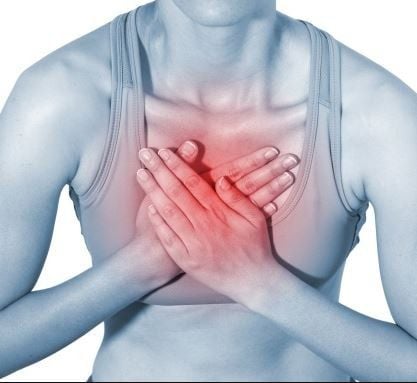
Shortness of breath, especially during physical activity Wheezing Chest tightness Chronic cough that may produce mucus (sputum) that may be clear, white, yellow, or bluish Frequent respiratory infections Lack of energy Uncontrolled weight loss Swelling in the ankles, feet, or legs People with COPD are also more likely to experience exacerbations, in which symptoms of the disease becomes worse than the daily change and persists for at least a few days.
There are many factors that contribute to the development of COPD. The leading cause is long-term smoking. And some other causes such as:
Secondhand smoke Air pollution Long-term exposure to harmful dust or chemical fumes in the workplace In rare cases, non-smokers or children can develop COPD due to alpha-1 antitrypsin deficiency (A1AD). A1AD is a genetic disorder caused by abnormally low levels of a protein called alpha-1 antitrypsin. These patients develop emphysema located at the base of the lungs.
Recommended videos:
2. Imaging techniques to evaluate chronic obstructive pulmonary disease (COPD)
If your doctor suspects you have COPD, the following tests may be ordered:Spirometry : This is also known as a pulmonary function test or PFT. To perform this test, you will be asked to exhale as hard as you can into a tube connected to the spirometer. The total volume of air exhaled from your lungs is called the forced vital capacity (FVC). The percentage of FVC that is dropped in the first second is called FEV1. (FEV stands for forced expiratory volume). The maximum rate at which you empty your lungs is called the peak expiratory flow rate (PEFR). This test is thought to be the most effective because it can identify COPD before significant symptoms appear. It can also help doctors monitor the progression of COPD and monitor the effectiveness of treatment. Bronchodilator reversibility test: This test combines spirometry with the use of a bronchodilator, which is a medicine that helps open up the airways. For this test, you'll undergo a standard spirometry test to get a baseline measure of how well your lungs are working. Then, after about 15 minutes, you'll take a dose of the bronchodilator and repeat the spirometry test. This screening is also useful in monitoring people who have been diagnosed with COPD, asthma, or both. The test results can help your doctor determine if your current bronchodilator therapy is working, and if it needs to be adjusted. Arterial blood gas analysis: This test measures the amount of oxygen and carbon dioxide present in the blood. A high percentage of carbon dioxide in the blood can be a sign of poorly functioning lungs due to COPD. Genetic testing: Although smoking and exposure to harmful substances in the environment are the main causes of COPD, genetic risk factors have also been implicated in the condition. Your doctor may check your alpha-1 antitrypsin (AAT) level. This protein helps protect the lungs from inflammation caused by irritants such as pollution or cigarette smoke. It is produced by the liver and then released into the bloodstream. People who have low or low levels of alpha-1 antitrypsin and often develop COPD at a young age. Through genetic testing, it is possible to find the cause of the disease if AAT deficiency is present.

X-ray: This test can help support the diagnosis of COPD by creating images of the lungs to evaluate symptoms of shortness of breath or chronic cough. Although a chest X-ray may not show COPD until the condition becomes severe, the resulting images may show enlarged lungs, air sacs (bullae), or a flat diaphragm. Furthermore, a chest X-ray may also be used to determine if another medical condition may be causing symptoms similar to COPD. Computed tomography (CT): This test may be done to help aid in the diagnosis of COPD or determine if disease progression is worsening. It combines special X-ray equipment with sophisticated computers to create multiple pictures or pictures of the inside of the lungs. CT lung imaging can better identify emphysema and detect it at an earlier stage than chest x-ray. Furthermore, this method can also identify other changes in COPD such as enlarged arteries in the lungs. In addition, a CT scan is sometimes used to measure the extent of emphysema in the lungs. It can also help determine if symptoms are the result of another medical condition of the chest. MRI scan: This test will provide a complete picture of the morphology of the airways to help the doctor predict more effective treatment. Moreover, with this method, in addition to assessing lung ventilation function, it also identifies other respiratory diseases such as bronchial asthma, pulmonary fibrosis, or evaluates lung function after lobectomy.
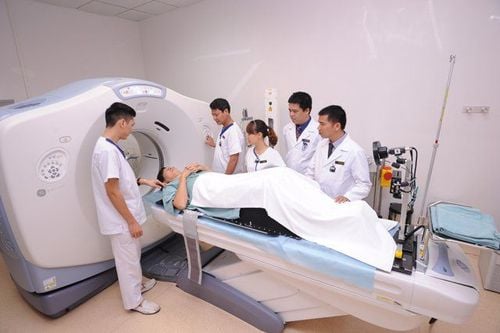
Currently, Vinmec International General Hospital has been and continues to be fully equipped with modern diagnostic facilities such as: PET/CT, SPECT/CT, MRI, X-ray..., blood gas testing , spirometry, ... to diagnose chronic obstructive pulmonary disease
After having an accurate diagnosis of the disease and stage, the patient will be consulted to choose the most appropriate and effective treatment methods . The treatment process is always closely coordinated with many different specialties to bring the highest efficiency and comfort to the patient. After undergoing the treatment phase, the patient will also be monitored and re-examined to determine whether the treatment is effective or not. Therefore, customers can feel secure with the medical examination and treatment process at Vinmec.
Please dial HOTLINE for more information or register for an appointment HERE. Download MyVinmec app to make appointments faster and to manage your bookings easily.
References: mayoclinic.org, radiologyinfo.org





